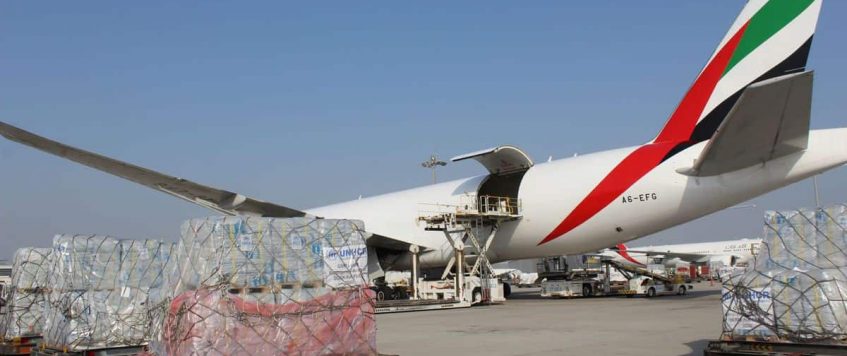-
05
Nov
Exorbitant ocean rates, need for speed give air cargo an edge
Increased use of airfreight by shippers trying to avoid clogged ports is adding pressure to overtaxed air capacity and sharply pushing up rates, especially out of Asia, but new data showing demand plateaued in October reinforces evidence that the traditional busy shipping season started earlier than normal.
In a panic over slower factory production due to power rationing in China and shortages of semiconductors, as well as ocean shipping backlogs that have quadrupled delivery times, more retailers and manufacturers have rushed to make emergency air shipments since July. Flights with exports from Asia were full in October, hiking the price of shipping to Europe by 20% from September and rates to North America into double-digit territory.
A systemic lack of capacity from reduced passenger flights due to the pandemic has made space difficult to find, freight experts say.
The International Air Transport Association on Wednesday said the passenger airline sector saw a 2.7-point month-over-month improvement in traffic during September, primarily due to lifting of travel curbs in China, with total demand 53.4% below the 2019 benchmark. But international passenger demand, which dictates how many widebody jets with lots of cargo capacity are flying on the key trade lanes, actually worsened by half a point to 69.2% of pre-pandemic levels.
COVID restrictions at certain airports have reduced labor available to load and unload planes, further constraining air capacity.
On Monday, Hong Kong Air Cargo Terminals Ltd. said it returned to full staffing and normal operations after authorities forced many workers into quarantine for contact with a single ramp worker who tested positive Oct. 7. The manpower shortage, plus two typhoons, affected about 20% of flights. HACTL was able to minimize the impact through increased overtime, rescheduling of some flights, redeployment of other ramp staff and subcontracting of some functions to other operators.
The China International Import Expo held in Shanghai from this Friday through next Wednesday has caused another pinch point, with some airlines canceling scheduled freighter and passenger freighter service during the event. Spot rates have increased sharply in recent days, and shippers can expect transit delays of three to five days due to the limited capacity, freight management company Flexport said in a market update to customers.
The benchmark rate from China to the U.S. West Coast reached $12.71 per kilogram at the end of October, about four times the normal level, according to the Freightos Air Index. The index is powered by automated transactions on the company’s freight booking platform. Many freight forwarders say the true spot rate, which includes premiums to guarantee a booking, is closer to $18 to $20 per kilo.
Supply, demand dynamics Clive Data Services, which tracks the airfreight market by collecting data on widebody passenger and freighter flights from many airlines, said Wednesday that physical volume moved globally grew 3% in October from 2019 and was up 14% from a year ago, but the measure of how full planes are dipped 3 points from October 2020.
The average reading of 68% is relatively high. Before the pandemic, peak season load factors hovered around 67%, but because they reached 68% in late September some analysts expected increased capacity utilization per flight. Still, the figure reflects the fact that the market is efficiently matching supply and demand, according to Clive Data.
Although the data suggests the peak season surge in demand has not been as dramatic as expected so far, freight forwarders paint a picture of extreme scarcity on the major trade routes.
Clive Data said load factors out of the Asia-Pacific region to North America and Europe were about 90%, with certain airports like Shanghai well above that.
Overall, air cargo rates were up 10% month-over-month, Clive said in its report. Compared to peak season 2019, prices are 155% higher and they are 37% above where they were a year ago. Some midtier markets, such as Vietnam and Malaysia, had higher spot rates to Europe — between $9 and $10 per kilo — than Hong Kong does, demonstrating that like politics, all cargo is local.
Large shippers are heavily leaning on freight forwarders to charter entire aircraft, either for their exclusive use or sharing with other customers, but most aircraft are already committed. Competition for freighters is so high that the one-way cost from China to the U.S. Midwest is about $2 million, according to air logistics specialists.
by Eric Kulisch at Air Cargo
-


